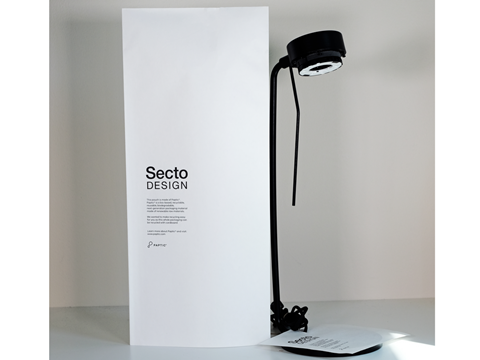
As part of our Finalist Interview series ahead of the Sustainability Awards, we spoke to Paptic about its renewable material, designed to be a recyclable material alternative to pack surface-sensitive items, nominated in the Commercialized Renewable Materials category.
You’re a finalist in the Sustainability Awards 2024. Congratulations! To start off, could you summarise your entry, in less than 50 words?
Paptic material, made from wood fibre, is lightweight, durable, and soft, protecting delicate items like electronics, personal care products, furniture, and fashion accessories. It is scalable, FSC certified, and recyclable with cardboard, the most developed recycling stream globally.
Why do you think the judges were impressed with your entry? Tell us about what is innovative about your project and/or about its impact on packaging sustainability.
The uniqueness of Paptic material. The market has faced a challenge: there hasn’t been a sustainable, easily recyclable alternative to plastic for packaging surface-sensitive items. The risk of single-use plastic packaging ending up in nature is high because the plastic recycling system is still underdeveloped.
Paptic material combines sustainability and functionality. It can be easily adopted using existing plastic converting lines, requiring no additional investments. Production can be scaled up effortlessly as it is contract-manufactured on existing paper machines. Its durability, softness, and moisture tolerance set it apart from paper.
Finally, can you tell us about the ongoing development of your project, e.g. how your innovation/initiative has been received by the industry, or what the next steps are in commercialization/product development?
Secto Design sought to enhance sustainability by moving their Petite product line from fossil-based to recyclable packaging. They aimed for a seamless transition by replacing the remaining plastic hoods with renewable, recyclable material, allowing the entire package to be recycled with cardboard.
Paptic was an obvious contender; a few different ideas were discussed but the right Paptic based solution was quickly found and the change from the plastic hood was easily implemented.
This innovation not only aligned with the circular economy but also demonstrated an effortless, scalable solution without the need to overhaul existing packaging designs. Looking ahead, Secto Design plans to eliminate plastics from all their packaging, reinforcing their commitment to sustainable, cutting-edge solutions in design and production.
The winners of the Sustainability Awards 2024 will be announced at the Sustainable Packaging Summit, taking place in Amsterdam on 12-13 November. The Summit mobilizes leaders of the FMCG value chain, policymakers, NGOs, recyclers and investors to collaborate, remove barriers and identify opportunities on the road to sustainable transformation.
To learn more or register, visit: https://www.packagingsummit.earth/2024
If you liked this story, you might also enjoy:
How are the top brands progressing on packaging sustainability?
Sustainable Innovation Report 2024: Current trends and future priorities
Reuse vs. single use – which is better for the environment?
The ultimate guide to global plastic sustainability regulation












No comments yet